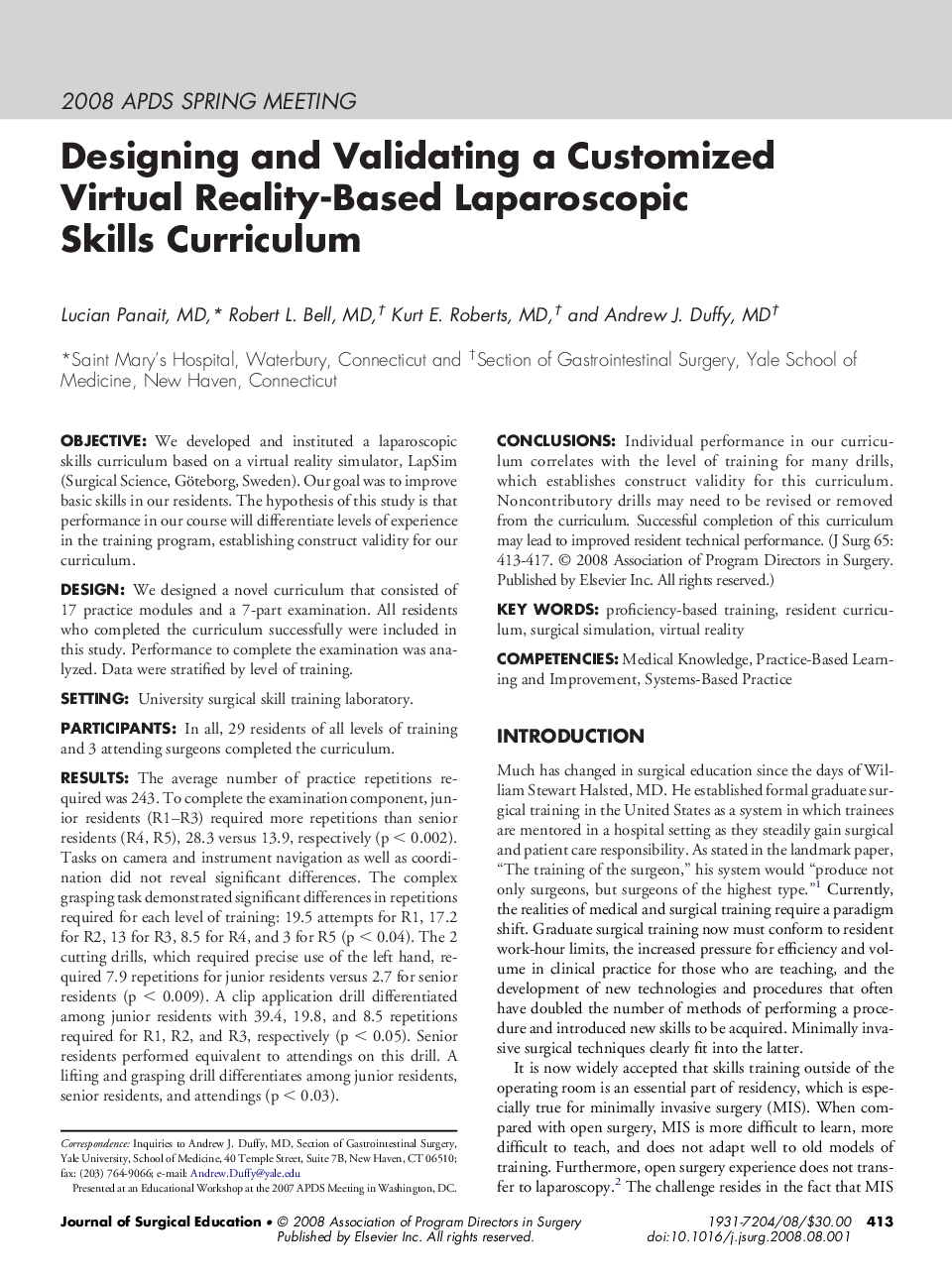| کد مقاله | کد نشریه | سال انتشار | مقاله انگلیسی | نسخه تمام متن |
|---|---|---|---|---|
| 4298463 | 1288355 | 2008 | 5 صفحه PDF | دانلود رایگان |

ObjectiveWe developed and instituted a laparoscopic skills curriculum based on a virtual reality simulator, LapSim (Surgical Science, Göteborg, Sweden). Our goal was to improve basic skills in our residents. The hypothesis of this study is that performance in our course will differentiate levels of experience in the training program, establishing construct validity for our curriculum.DesignWe designed a novel curriculum that consisted of 17 practice modules and a 7-part examination. All residents who completed the curriculum successfully were included in this study. Performance to complete the examination was analyzed. Data were stratified by level of training.SettingUniversity surgical skill training laboratory.ParticipantsIn all, 29 residents of all levels of training and 3 attending surgeons completed the curriculum.ResultsThe average number of practice repetitions required was 243. To complete the examination component, junior residents (R1–R3) required more repetitions than senior residents (R4, R5), 28.3 versus 13.9, respectively (p < 0.002). Tasks on camera and instrument navigation as well as coordination did not reveal significant differences. The complex grasping task demonstrated significant differences in repetitions required for each level of training: 19.5 attempts for R1, 17.2 for R2, 13 for R3, 8.5 for R4, and 3 for R5 (p < 0.04). The 2 cutting drills, which required precise use of the left hand, required 7.9 repetitions for junior residents versus 2.7 for senior residents (p < 0.009). A clip application drill differentiated among junior residents with 39.4, 19.8, and 8.5 repetitions required for R1, R2, and R3, respectively (p < 0.05). Senior residents performed equivalent to attendings on this drill. A lifting and grasping drill differentiates among junior residents, senior residents, and attendings (p < 0.03).ConclusionsIndividual performance in our curriculum correlates with the level of training for many drills, which establishes construct validity for this curriculum. Noncontributory drills may need to be revised or removed from the curriculum. Successful completion of this curriculum may lead to improved resident technical performance.
Journal: Journal of Surgical Education - Volume 65, Issue 6, November–December 2008, Pages 413–417